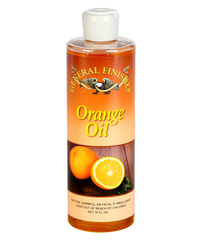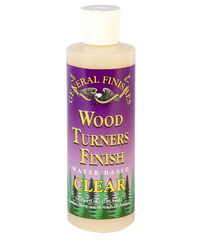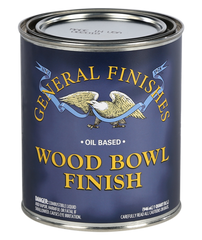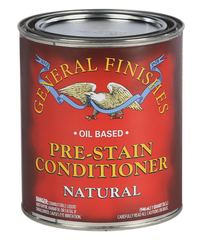Product Description
Gel Stain from General Finishes is home of the popular Java Gel Stain featured across the nation's social media for upcycling furniture and cabinets. Gel wood stains are heavy-bodied and do not penetrate as deeply into the wood as liquid oil-based wipe-on stains do, providing the deepest, richest colors of any oil-based stain available.
Instructions
General Finishes Gel Stain Application Steps
- Stir the stain to reincorporate solids that have settled to the bottom of the can.
- Use only with adequate ventilation. Open windows and doors, or use other means to maintain fresh air flow during application and drying.
- If desired, thin stain with mineral spirits. Start by adding 5% by volume and increase up to 15% as needed.
- There is usually no need for a Pre-Stain Conditioner to improve color uniformity. Gel Stain is loaded with pigments that provide deep uniform coverage.
- Test your complete finishing process before starting. The stain color is affected by variances in wood and deepened with the application of topcoat.
- Divide your project into manageable sections: top, side, drawer, door, table seam.
-
Hand-Application over Raw Wood:
- Optionally, apply a slip coat of mineral spirits over the raw wood immediately before application to facilitate the flow of stain on the surface and reduce lap marks. (This is not a conditioner)
- Working quickly, apply a LIBERAL coat using a natural bristle brush, foam brush, staining pad, pad applicator or foam roller. Gel Stain dries quickly for all the reasons customers love it: it is loaded with colorants and solids. If not enough stain is used, the surface may dry too quickly, causing an uneven appearance. On large surfaces, leave a wet edge between passes to prevent lap marks. We recommend getting a buddy to help apply the stain.
- Stain your project section by section and wipe off the excess evenly with the grain using absorbent shop towels or open-weave cloths, such as cotton terry towels for larger projects. Check for missed spots and lap marks before moving to the next section. Do NOT use cotton t-shirts to wipe away stain because they will "push" the stain around and not absorb it.
- Immediately correct lap marks by rewetting the entire working area with stain and wiping off the excess.
- Pull excess stain out of corners and details with a natural bristle brush.
-
Let the stain dry 12-24 hours in ideal conditions: 70°F/20°C, 50-70% humidity. Inadequate dry time is one of the top reasons for Gel Stain finish failure. If in doubt, wait longer. Increase dry time if:
- Humidity is over 80%
- 3+ coats are applied (not recommended)
- Thick coats are applied
- Layering General Finishes water- and oil-based products:
- Water over oil: Let oil-based products dry 72+hr before applying water-based products
- Oil over water: Let water-based products dry 24+hr before applying oil-based products
- If Gel Stain is tacky after 5 days, dry time requirements have not been met and it may never dry. The only alternative is to strip off the finish and start over.
- Optional: apply a second coat to deepen the color. Apply no more than 2 coats.
- Finish with 3 coats of General Finishes topcoat, letting each coat dry 72 hours.
-
Dry Brushing Over an Existing Finish
- Finishes dry in two directions: upwards the air side and absorption in raw wood. When finishes are applied over an existing finish, dry times must be increased.
- Prepare surface by scrubbing with a 50:50 mix of denatured alcohol and water using a Scotch Brite Pad. Lightly sand with fine-grade (220-320) foam sanding pad. Wipe off dust with an oil-free tack cloth or a water-dampened rag.
- Test your complete finishing process before starting. The stain color is affected by variances in wood and deepened with the application of topcoat.
- Apply stain with a natural bristle brush or foam brush. Feather out uneven areas and pull excess stain from corners using a bristle brush. Discharge accumulated stain from the brush onto a paper towel soaked with mineral spirits as you work.
-
Let the stain dry 72+ hours in ideal conditions: 70°F/20°C, 50-70% humidity. You can tell if an oil-based finish is dry if it is no longer tacky, and cool to the touch. If in doubt, wait longer. Increase dry time if:
- Humidity is over 80%
- 3+ coats are applied
- Thick coats are applied
- Applying over products from other brands
- Layering General Finishes water- and oil-based products:
- Water over oil: Let oil-based products dry 72+hr before applying water-based products
- Oil over water: Let water-based products dry 24+hr before applying oil-based products
- If Gel Stain is tacky after 5 days, dry time requirements have not been met and it may never dry. The only alternative is to strip the finish off and start over.
- Optional: apply a second coat to deepen the color. Apply no more than 2 coats.
- Finish with 3 coats of General Finishes topcoat, letting each coat dry 72 hours
- Painting on Stain Without Wiping Away:
- When painting on Gel Stain without wiping away, let the stain dry 72+ hours between coats in ideal conditions: 70°F/20°C; 50-70% humidity.
- Layering General Finishes water- and oil-based products:
- Water over oil: Let oil-based products dry 72+hr before applying water-based products
- Oil over water: Let water-based products dry 24+hr before applying oil-based products
Mixing Gel Colors
- Gel stains can be intermixed to create custom colors.
- Gel Stain can be mixed with no more than 10% Liquid Oil Stain is added by volume. The liquid stain will thin the stain, which may help it spread more easily but it will not have as much coverage.
- Gel Stain can be layered over other General Finishes water and oil-based stains. Allow for adequate dry time when layering water and oil products.
SDS
https://generalfinishes.com/wood-finishes-retail/oil-based-wood-stains-sealers/oil-based-gel-stains
Key Features
N/A
Guarantee
N/A
Specification
| Spec 1 | Spec 2 |
|---|
FAQ's






























